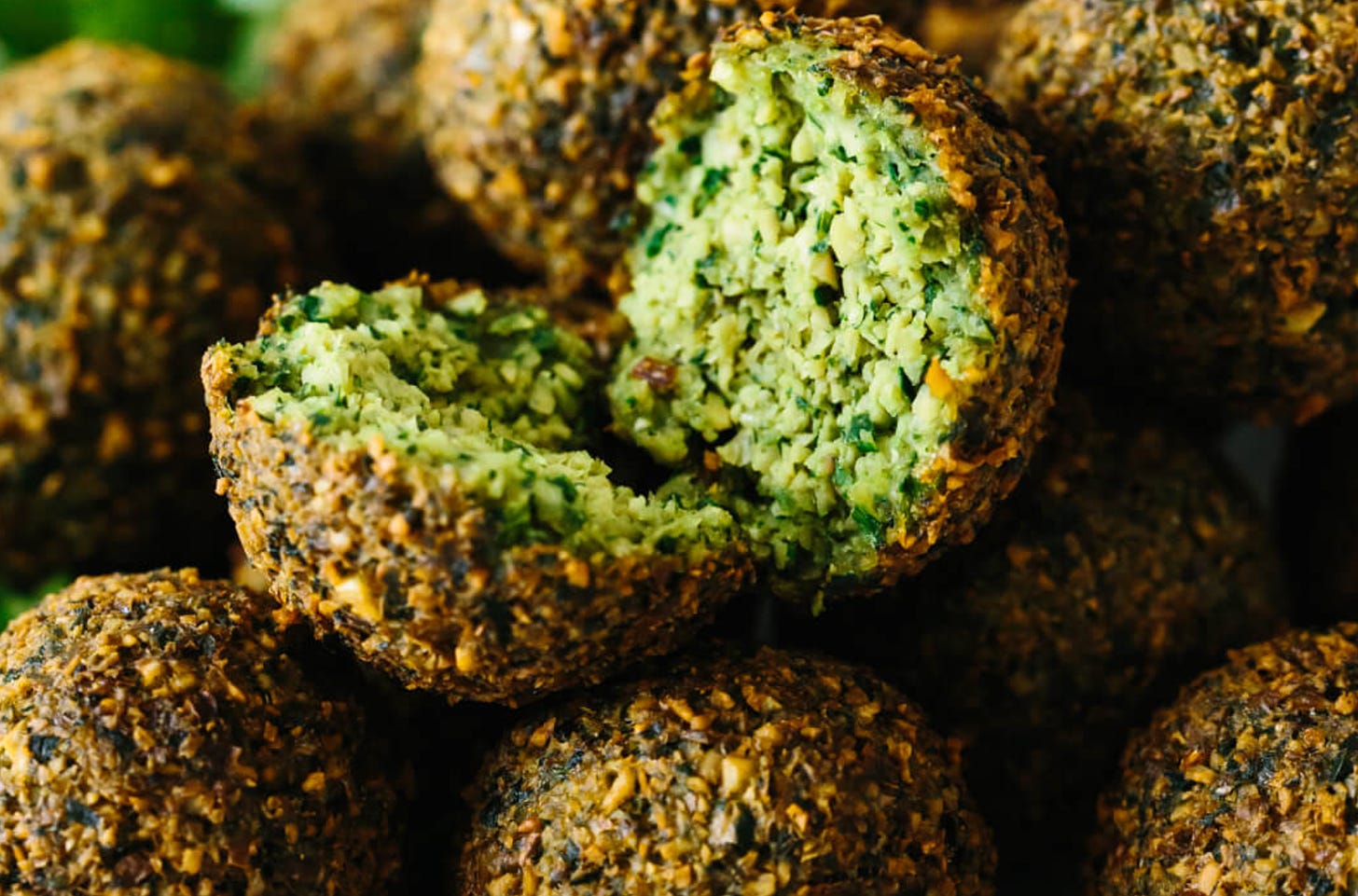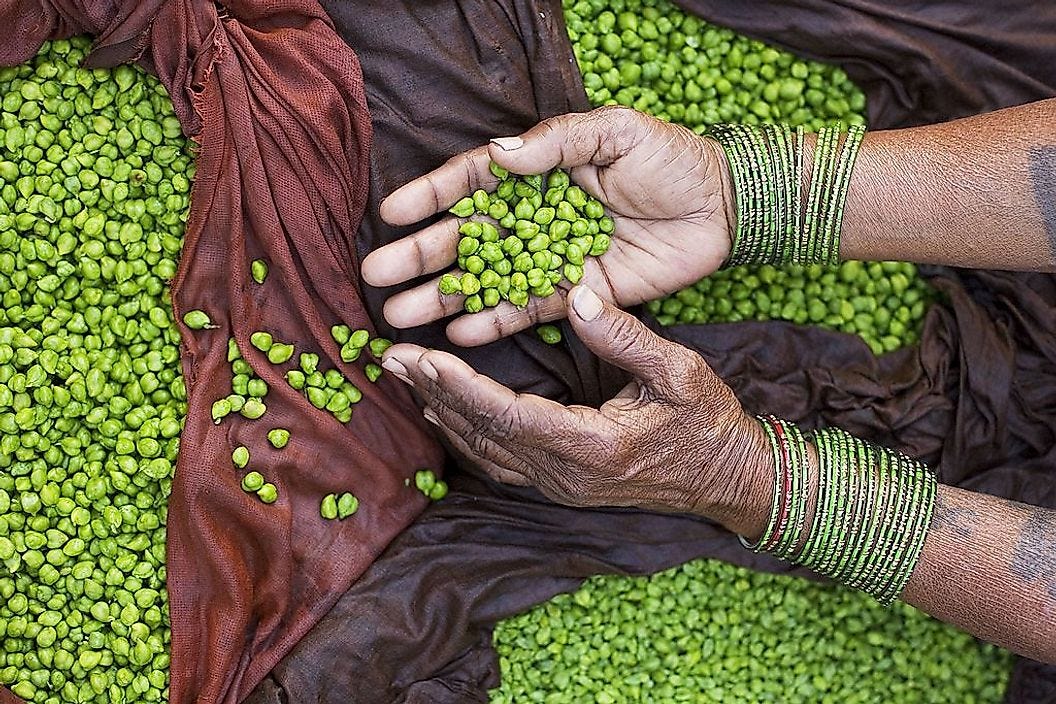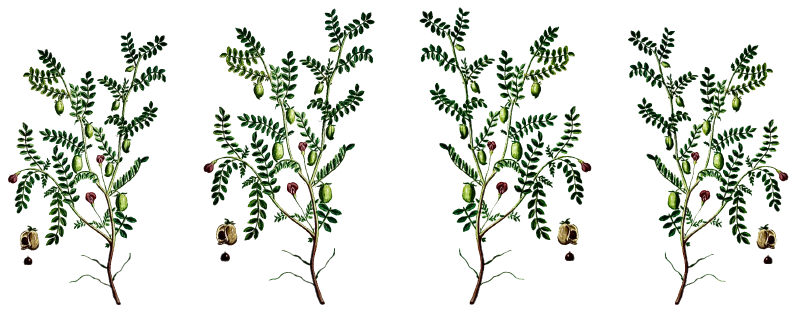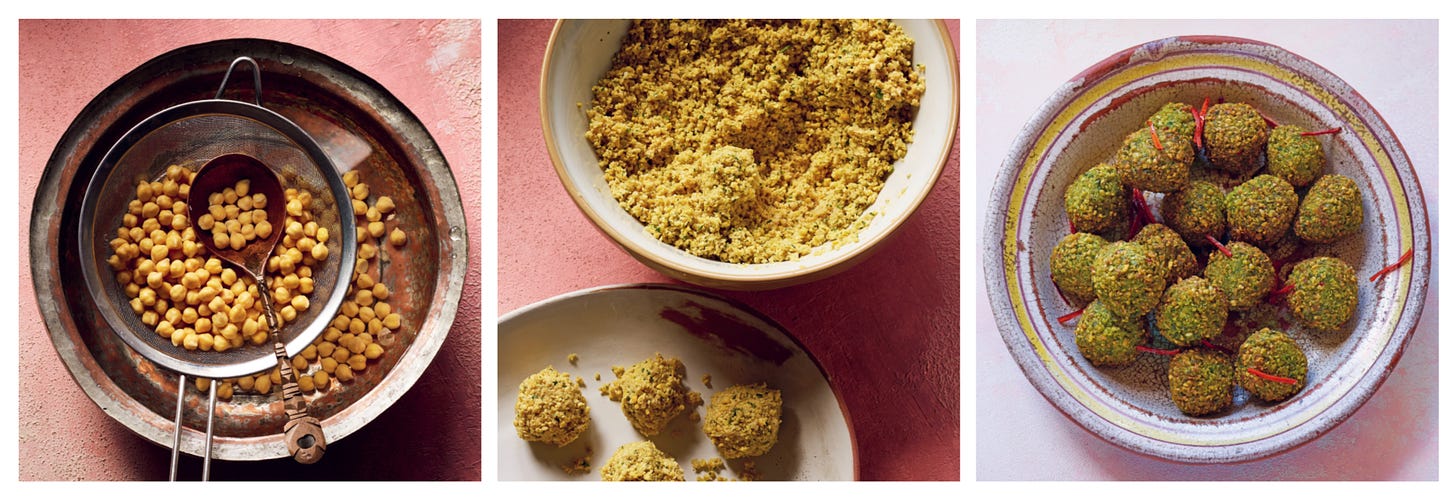Welcome back to Notable Sandwiches, a weekly feature in which my editor David Swanson and I nibble our way through the bonkers document that is Wikipedia’s List of Notable Sandwiches, in alphabetical order. This week, a Middle Eastern staple: falafel.
Hi all,
Getting the pledge-drive stuff off my mind up top: This newsletter is a labor of love, one David and I have poured a great deal of work into, and lost a great many hours of sleep over. I am proud of this eccentric and sometimes beautiful and always passionate publication, but at the current rate of paid subscriptions, it is simply not sustainable , especially given how much bandwidth it takes (which we might otherwise use for freelance work.) I would love to continue serving you up multiple piping-hot and delicious essays a week indefinitely, but in order to do so, we simply need more paying subscribers.
If you’d like to see The Sword and the Sandwich continue, please hit that upgrade subscription below.
There is a bullshit old adage that living and writing are more or less exclusive activities. Writers are alive, that is, but the process of analyzing ones experiences and reprocessing them into words dries out that life on the vine. While in the grip of strong emotion, such desiccant reflection is nearly impossible. Or, as Wordsworth put it rather more gently in his Lyrical Ballads, poetry is “emotion recollected in tranquility.”
As a person who has spent the majority of her adult life writing words professionally—often words drawn from the very deepest wellsprings of memory, on deadline, and for very little money—I have a rather more jaundiced view of this “tranquility.” There are certain moments I have returned to so often and from so many different angles that they live as canned bits of narrative rather than immediate experiences inside me, their hot cores hollowed out. Do that too many times and you’re brittler than you know. Write too much about your life and it becomes dry as an over-fried falafel ball. Battered, shattered, harboring just the ghost of spice.
In the natural world, the chickpea arrives in a verdant little wisp of leaf, hard and green when popped from its seed-pod. It loves sun. Once plucked, it can be ground to flour, pounded to paste, soaked, salted, canned, even used for the remarkably binding qualities of their juice, which makes a passable vegan meringue.
For thousand of years humans have grown legumes (a category of foods I roughly understand as “sometimes beans but sometimes not beans”); there’s evidence of the chickpea cropping up in the ancient Fertile Crescent. It is also, supposedly, one of the first eight crops cultivated by humankind, all the way back in the Neolithic Age (though it has retained a remarkably durable popularity, unlike some of its ancient peers such as bitter vetch and emmer wheat). More recently, the chick pea has also helped give us falafel. Though it is often made with fava beans, the falafel I grew up with was the chickpea kind, the origins of which are—like any famous food—murky and mythical and difficult to sort. Some histories put falafel at a millennium old, and some, older. It is one of the ways to break the membrane of a chickpea and pulse it beyond recognition, consume it entirely and forget you ever did.
There are stories I’ve never written about and they live in a different place inside me, all the heat retained, kept buried until such time as an eruption would prove profitable enough to justify all the destruction they would cause. And others simply too ugly or too fearsome to write about.
I grew up eating many terrible falafel balls due to a surfeit of Zionism in my primary education. Consider it a metonym: despite being ubiquitous throughout the Middle East, falafel has been adopted as Israel’s national dish. And so part of of my childhood consisted of an endless volley of puck-hard falafel balls doused in mealy hummus. Despite the near-constant cannibalization of my own memories in the pursuit of prose, I rarely broach the big and ugly subject of Zionism, tangled as it is with a need for approval from people I love, yet demanded by a great and overweening notion of injustice. I know I was indoctrinated by my childhood, and I have sought to rub away the bright hard patina of bad ideology that covers the subject. There is so much I love about my heritage but the great central This of Zionism is both easy to elide and too ugly not to confront.
Burnt falafel tastes bitter no matter how you spice it—how much za’atar and amba and tahini, no matter how warm and yielding the pita bread.
According to culinary legend, the Jews who came to Israel from Yemen brought falafel along with them, by way of the Christian Copts of Egypt. Today both sides of this conflict adore the chickpea; it thrives in the Mediterranean sun, with its short laurel-like branches growing through and around the barbed-wire fences that spring up around settlements created under armed guard. Above, the olive groves, below, the chickpeas, the air redolent with sun, heavy with fruit, and guns everywhere overripe and bursting.
When you have written your life more than you’ve lived it—spent too long in isolated rooms, analyzing every strong emotion you feel as a potential pitch—there are things you must hoard as too precious to risk pulverizing. There is the example of love; I hide the face of the one I love when I write for thousands; it is too honey-tender for such rough usage, and I scarcely dare to believe such things exist as strong enfolding limbs and glancing kitchen kisses, and still less that I deserve them. Even the most vague of references in this regard feels too much. Some things are delicate. If you drop a chickpea in boiling oil it will harden fast and every drop of moisture it hid in its little green pod will be gone.
As to the care of the plant: Don’t harvest until the leaves turn brown and wither, and, in the case of the Kabuli chickpea, the cream-colored petals wilt and droop (Desi chickpeas have purple flowers, but the principle is the same: wait until they die to claim your prize). At the end of the plant’s lifespan comes its bounty, in green handfuls. The chickpea’s name derives from an English corruption of the Latin cicer, or bean; one of Cicero’s ancestors supposedly had a chickpea-sized wart on his nose. Cicer begat the French “pois chiche,” and then the English “chich,” appended with “pease,” a generic word for grain that gives us, for example, pease porridge. The garbanzo bean—the chickpea’s other appellation, though it is neither a bean nor a pea—comes from Spanish by way of the Basque “garbantzu,” a combination of the words for “dry” and “seed.”
All it takes to grow a chickpea is a chickpea: save some of your harvest and plant it again and it will return to you.
When you spend so much time writing your life—considering what you will save and what you will mine for remunerative prose (knowing that in the process you are deracinating your own memories and depriving them of immediacy, knowing that pockets of your life are hollow as pita and staler than stale)—it renders you both cautious and avaricious. Life becomes a basket of chickpeas: some to save and some to pulverize and some to pat into delicate little spheres. A bushy and frenetic thing that needs enormous amounts of sun to sustain itself, and will drink thirstily if given the chance.
There is very good falafel on any number of street corners around the world, in a thousand cities, all the places where the chickpea has spread, along with the people who treat it with purpose and fill it with spice. There are ways to be in love that are so much quieter than I ever knew: the sight of a familiar book you didn’t own, the warmth of a palm cupping a shoulder. There are ideas I was once fed that now I spurn. Perhaps the great beauty of the chickpea is its malleability; it can be almost anything—flour, foam, and falafel—but most of all it can grow itself again, given the time, given the water, given enough open and generous sky.










Great read as always. I just upgraded my sub, as I want to help you make this work.